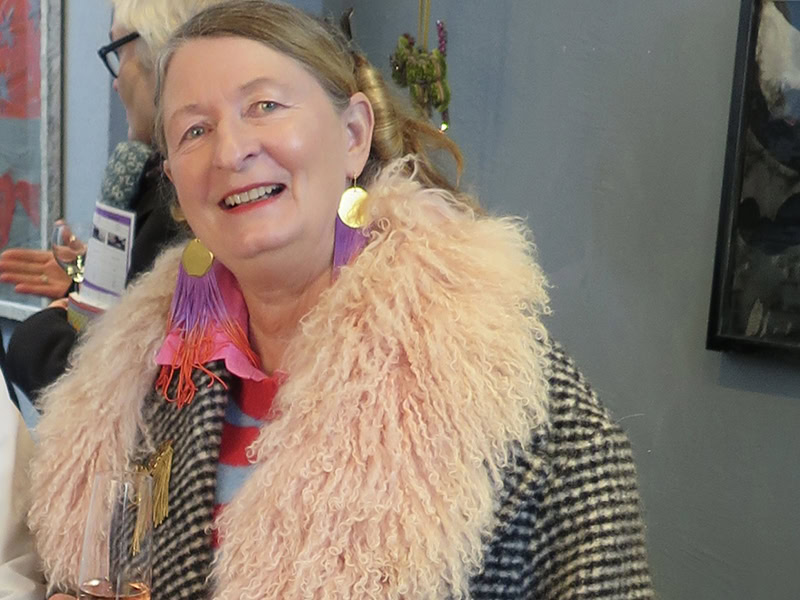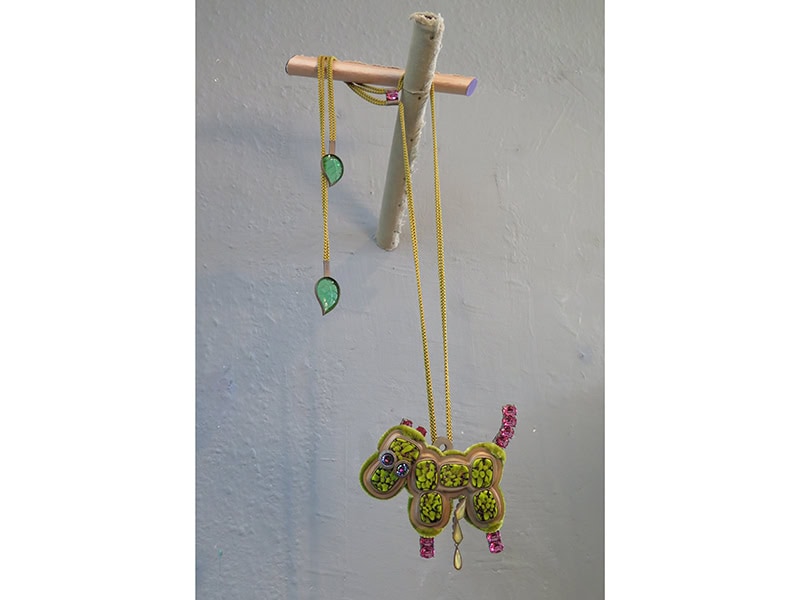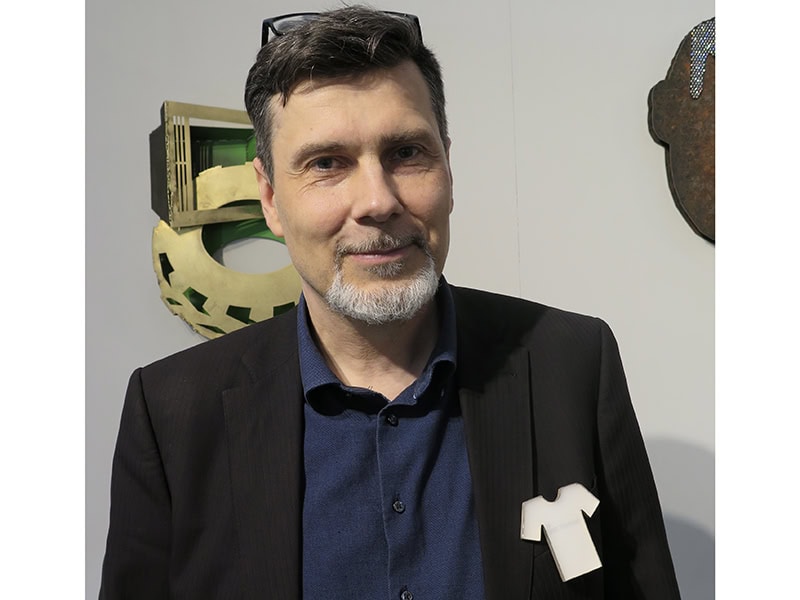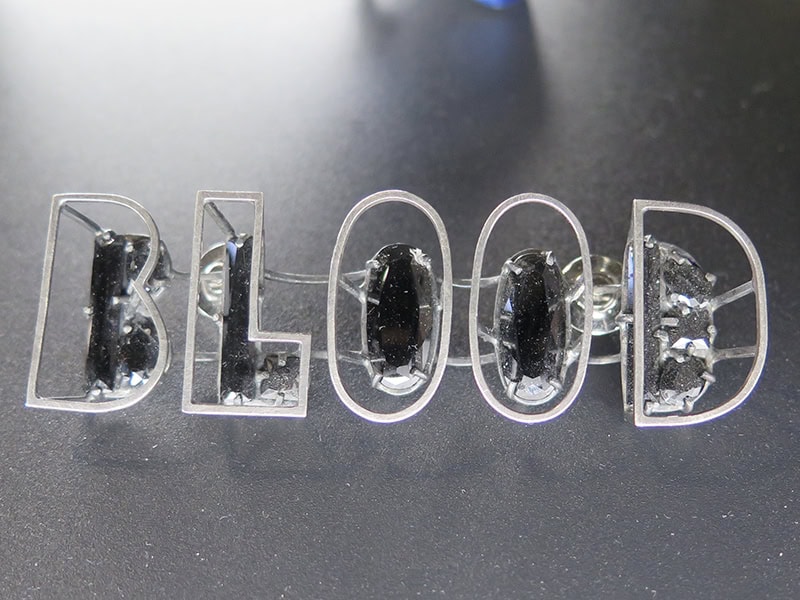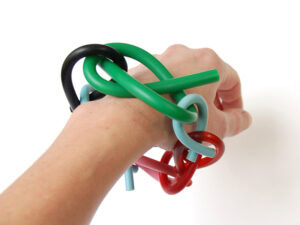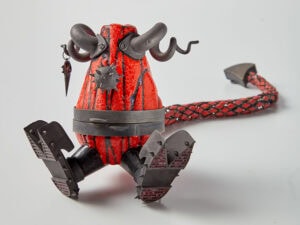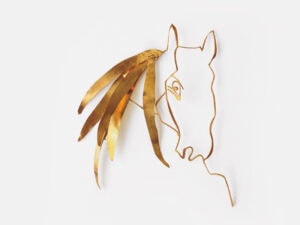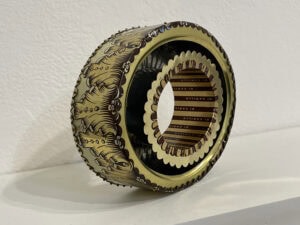 Why does art jewelry so often seem to be about the art and so little about the body or the wearer? I took this question with me to Munich Jewellery Week, on assignment from AJF. Across four days, I asked artists, designers, students, and gallerists to share their thoughts on it.
Why does art jewelry so often seem to be about the art and so little about the body or the wearer? I took this question with me to Munich Jewellery Week, on assignment from AJF. Across four days, I asked artists, designers, students, and gallerists to share their thoughts on it.
Art jewelry as identity
Martina Kocianova makes jewelry and she also experiments with and sculpts mycelium. Kocianova feels the question raises the idea of identity and identification with what we wear. She believes that art jewelry offers more freedom than fine jewelry to express oneself. And creating jewelry that is more about art is fun.
“We are not making work for a conservative public,” said the artist Helen Britton. “We are making work for interesting people, and there is so much variety. I think jewelry is part of a continuum of what people wear.”

Artist David Bielander pointed out that jewelry is not so much about the body but about the person who wears it. “Your canvas, your stage, is not the body, but [rather] the person that moves around. When you wear my piece or I wear my piece it’s always a new work which often has nothing to do with the other one. I find that fascinating,” Bielander said. “It’s not your brooch walking around with you, it’s always the person and the work, and the picture is complete with that worn object. This kind of identification is unique,” said Bielander.
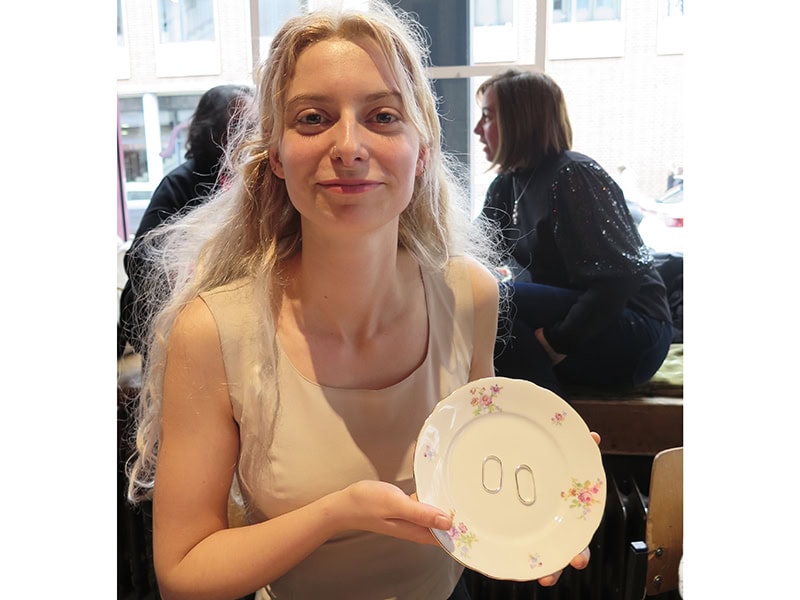
Elisabeth Pira, a student at PXL-MAD, makes objects related to the body. She thinks that art jewelry is still in battle with the fine arts, trying to fit in but not getting the recognition it deserves. She thinks this frustration has caused art jewelry to become more about the art and less about the jewelry or body.
“What makes art jewelry so special is that the body is the subject. We have this amazing and fascinating canvas to work with to express ourselves as an artist, and the ability for the consumer to use and wear our art as part of their personal expression,” said Pira.
Jewelry on the body and off the body
Many of the people I spoke with pointed out that jewelry on the body and off the body acts differently. The space and distance between the viewer and the object dictates the way it’s perceived. Jewelry is more intimate than any other art form, for its closeness to the body and for its potential to be worn close to the body.
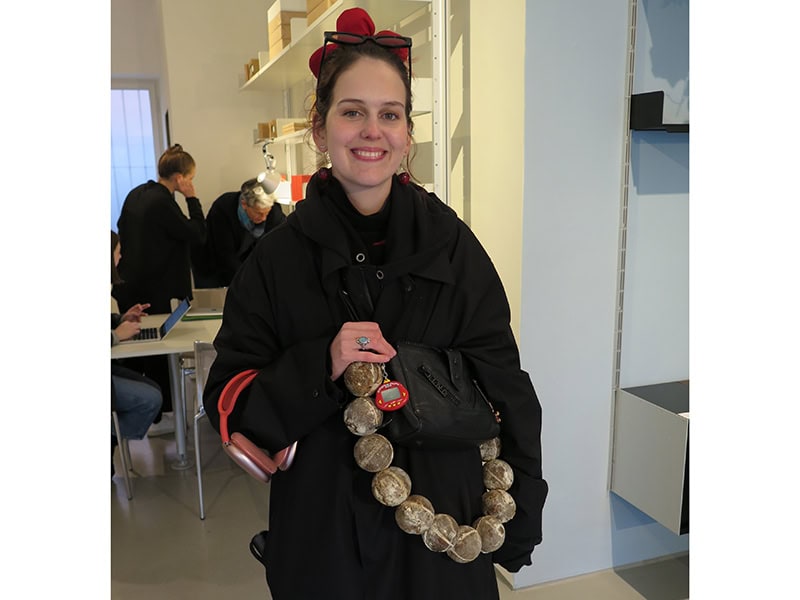
Martina Kocianova believes that jewelry only functions on the body, otherwise it remains an object. “I mean it’s an object—an art piece—until it is put on the body, then it becomes art jewelry,” Kocianova said.
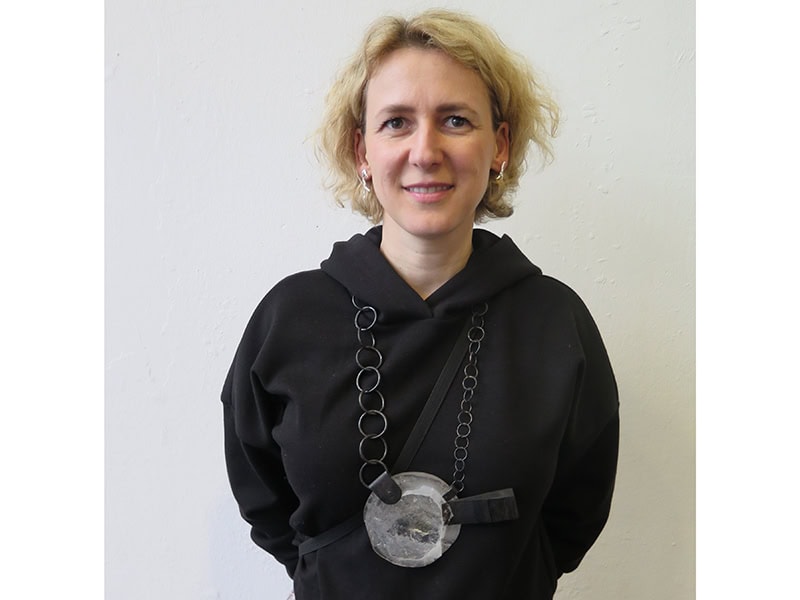
For artist Iris Hummer, it doesn’t matter if the jewel is also an object. Both are body-related. “Art jewelry can be a conscious exploration of one’s own body image, of social norms, of visualization, or of the relationship between object and subject, “ she said. She raises the example of children who like to pick things up and carry them with them. They get strength from just having the object in the palm of their hand. Be it a blade of grass, a stick from the woods or a pebble, there is some strength from holding something chosen in the hand, just for the sake of it.
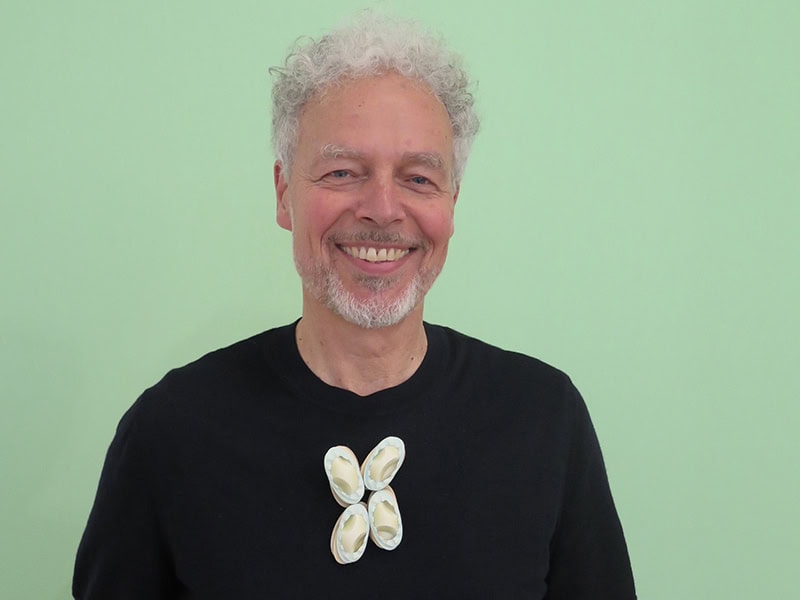
Norman Weber is an artist who likes to make and to live with jewelry. He served as the juror for the Schmuck special exhibition, in Munich, in 2024. Weber finds the wearer important. “Jewelry is a possibility to perform art in public. The person who wears my jewelry is the performer,” he said.
Jewelry has parameters
Some of the people I interviewed view their works as sculptures on a small scale. Norman Weber called his works tiny sculptures. Marie-Louise Kristensen, a jewelry artist from Copenhagen, called her works sculptural pieces of jewelry. Within the field, many works do resemble sculptures in photos with white backgrounds, images that have no reference to the body or to scale. Stylistically, the photos present the work as art, not jewelry.

“I am shocked [by] the amount of people who make brooches in the world of art jewelry,” said artist, designer, and brand creator Sonaam Sakhujaa. The high number may be because brooches offer more freedom to explore artistic vision since they require barely any size or shape restriction. Brooches can be photographs, paintings or sculptures, even play a video as long as they pin to clothing. Brooches can easily be attached to the body, just about anywhere on it, without having to accommodate a specific body part.
Weight and size are usually considerations in art jewelry. Oskar Rodach, who was minding the Kunzt66 gallery and who studies engineering, finds the limits jewelers face interesting. “A ring, for example, has a special purpose—to be worn on a finger, it is limited in a certain way, yet a maker can still be free, and it is interesting to see what jewelry artists can do with these limits,” he said.
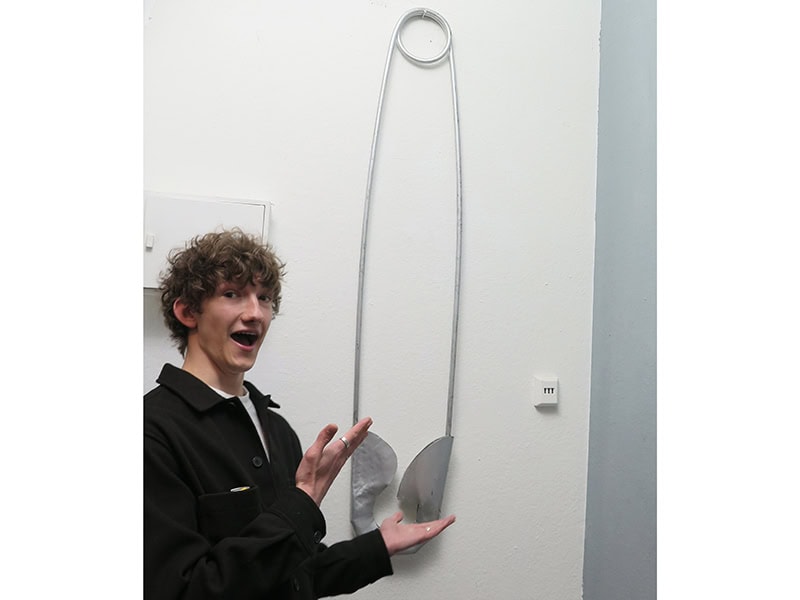
Some artists like to play precisely with these limits and expand them, like Marc Monzo with his microrings. Monzo has created a tiny white gold ring with an aquamarine that would fit only a baby and go no farther than the fingertips of an adult. It is a ring, but not meant to be worn. Other artists play with the weight and material of rings. Erle Nemwalts makes heavy rings of cast iron, perfectly wearable. Sayumi Yokouchi puns with the word “ring” itself, making rings with countless tiny bells that stand on it. The name of the work is Ring Your Bells.
“The medium sets the parameters,” said Bielander. “If I have a question I want to respond to with jewelry, I have certain parameters which define it.” The parameters shift according to genre. The question will be approached differently via dance, photography, or sculpture. With its usually small scale, jewelry points toward the body, but not always. It is wearable, but not always. Its weight considers the body but not always.
Jewelry brings meaning with it
Kristensen explained that her work is more about artistic vision. “My perspective is more about what I want to share, the thoughts, the forms, and materials, and therefore I call myself an artist because I have an artist perspective in making,” said Kristensen. “But pieces are very much jewelry because they are all attached to the body. When I work I have the wearable idea, where they should be on the body. I think it is also about jewelry because I am not making sculptures but I am making sculptural pieces of jewelry.”
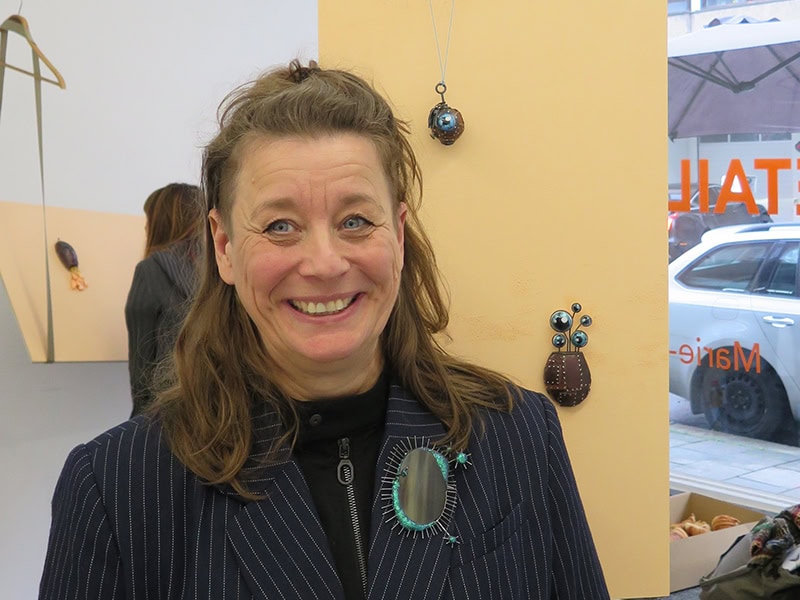
Sakhujaa said that art jewelry speaks more about the artist and the concept than about the status or cultural significance. A Cartier ring made of rubies and gold tells everyone that the wearer is a high-net-worth individual, while an Estonian folk brooch lets people know the person wearing it has respect for local traditions.
“In the kind of world that we are in, it is interesting to work with and wear the kind of jewelry that has a concept or a story behind,” said Sareh Zarghampour, a student at PXL-MAD.
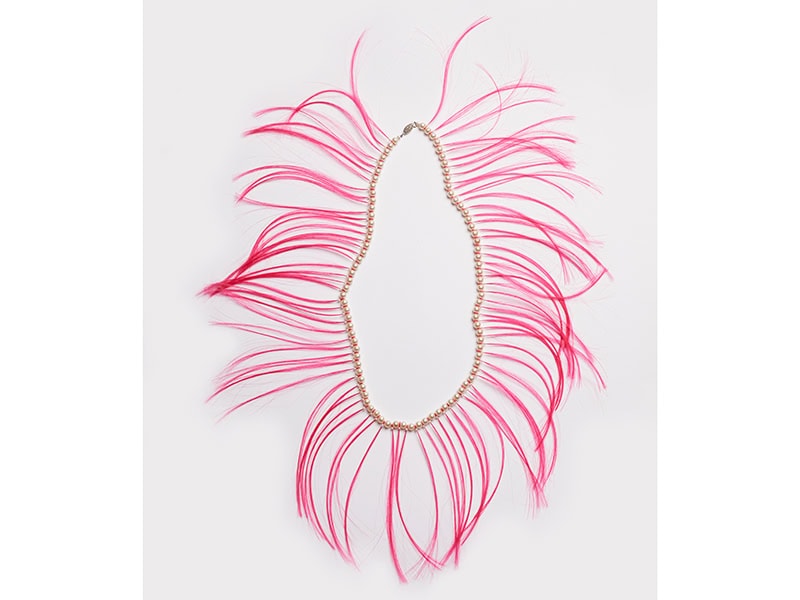
Artist Caroline Broadhead pointed to the gratification of working conceptually. “I guess people get carried away with the idea and the pleasure of working with the materials and the ideas, and not necessarily keeping on coming back to the body,” she said. Broadhead also thinks that it is okay to have some works that work well on the body and others that don’t, as long as there is reference to jewelry or to the body.
Communication
The jeweler, designer, and artist Arek Wolski uses art jewelry to show his thoughts and ideas. “It’s a good medium because someone will wear it and [broadcast] these ideas further,” Wolski said.
“The emphasis is on artistic expression, the communication of ideas, emotions, or concepts through the medium of jewelry,” said Hummer.
Art jewelry offers endless possibilities to express concepts and ideas. For example art jewelry can critique gender and power structures, the way Annette Dam does with her ties and lapels from suits.
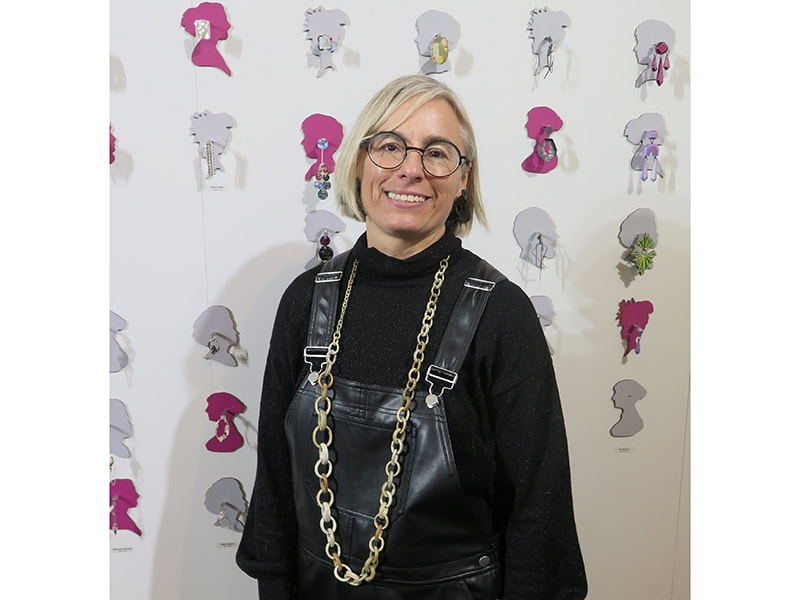
Heidi Lowe, whose eponymous gallery is in Lewes, DE, US, holds an earring show every year at Schmuck. She believes that art jewelry is very much about communication. It can go beyond expressing someone’s status. In fact, it may critique status, value systems, and greed. For example, Johanna Dahm’s rings Wilhelm Tell’s Shot are made of fine-gold and fine-silver ingots but she has broken their investment value by shooting a hole in them with a machine gun. In this way, a finger fits through the gun hole and ingots become rings.
The verdict is in. Art jewelry can’t escape the wearer. Its body-ness follows it like a shadow, making demands on the maker. A ring must fit the finger, a brooch must attach. The medium sets limits. The freedom to make comes with boundaries. The meaning of the work is important, and so is the wearability and the body.
We welcome your comments on our publishing, and will publish letters that engage with our articles in a thoughtful and polite manner. Please submit letters to the editor electronically; do so here. The page on which we publish Letters to the Editor is here.
© 2025 Art Jewelry Forum. All rights reserved. Content may not be reproduced in whole or in part without permission. For reprint permission, contact info (at) artjewelryforum (dot) org
